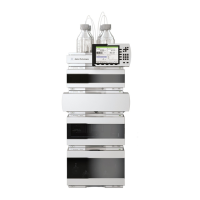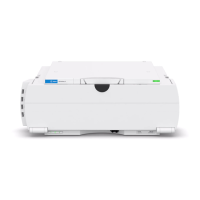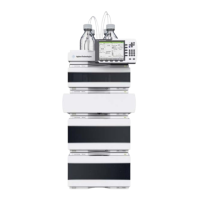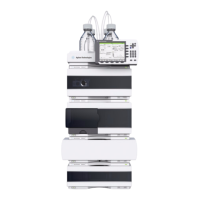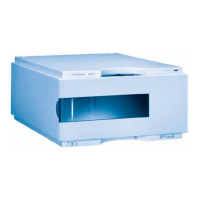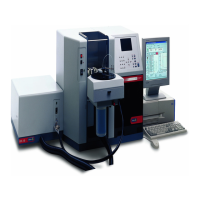1290 Infinity II High-Speed Pumps User Manual 53
3Using the Pump
Solvent Information
Polyphenylene Sulfide (PPS)
Polyphenylene sulfide has outstanding stability even at elevated temperatures. It
is resistant to dilute solutions of most inorganic acids, but it can be attacked by
some organic compounds and oxidizing reagents. Nonoxidizing inorganic acids,
such as sulfuric acid and phosphoric acid, have little effect on polyphenylene
sulfide, but at high concentrations and temperatures, they can still cause material
damage. Nonoxidizing organic chemicals generally have little effect on
polyphenylene sulfide stability, but amines, aromatic compounds, and
halogenated compounds may cause some swelling and softening over extended
periods of time at elevated temperatures. Strong oxidizing acids, such as nitric
acid (> 0.1 %), hydrogen halides (> 0.1 %), peroxy acids (> 1 %), or chlorosulfuric
acid degrade polyphenylene sulfide. It is not recommended to use polyphenylene
sulfide with oxidizing material, such as sodium hypochlorite and hydrogen
peroxide. However, under mild environmental conditions, at low concentrations
and for short exposure times, polyphenylene sulfide can withstand these
chemicals, for example, as ingredients of common disinfectant solutions.
PEEK
PEEK (Polyether-Ether Ketones) combines excellent properties regarding
biocompatibility, chemical resistance, mechanical and thermal stability. PEEK is
therefore the material of choice for UHPLC and biochemical instrumentation.
It is stable in the specified pH range (for the Bio-Inert LC system: pH 1 – 13, see
bio-inert module manuals for details), and inert to many common solvents.
There is still a number of known incompatibilities with chemicals such as
chloroform, methylene chloride, THF, DMSO, strong acids (nitric acid > 10 %,
sulfuric acid > 10 %, sulfonic acids, trichloroacetic acid), halogens or aqueous
halogen solutions, phenol and derivatives (cresols, salicylic acid, and so on).
When used above room temperature, PEEK is sensitive to bases and various
organic solvents, which can cause it to swell. Under such conditions, normal
PEEK capillaries are sensitive to high pressure. Therefore, Agilent uses stainless
steel cladded PEEK capillaries in bio-inert systems. The use of stainless steel
cladded PEEK capillaries keeps the flow path free of steel and ensures pressure
stability up to 600 bar. If in doubt, consult the available literature about the
chemical compatibility of PEEK.
